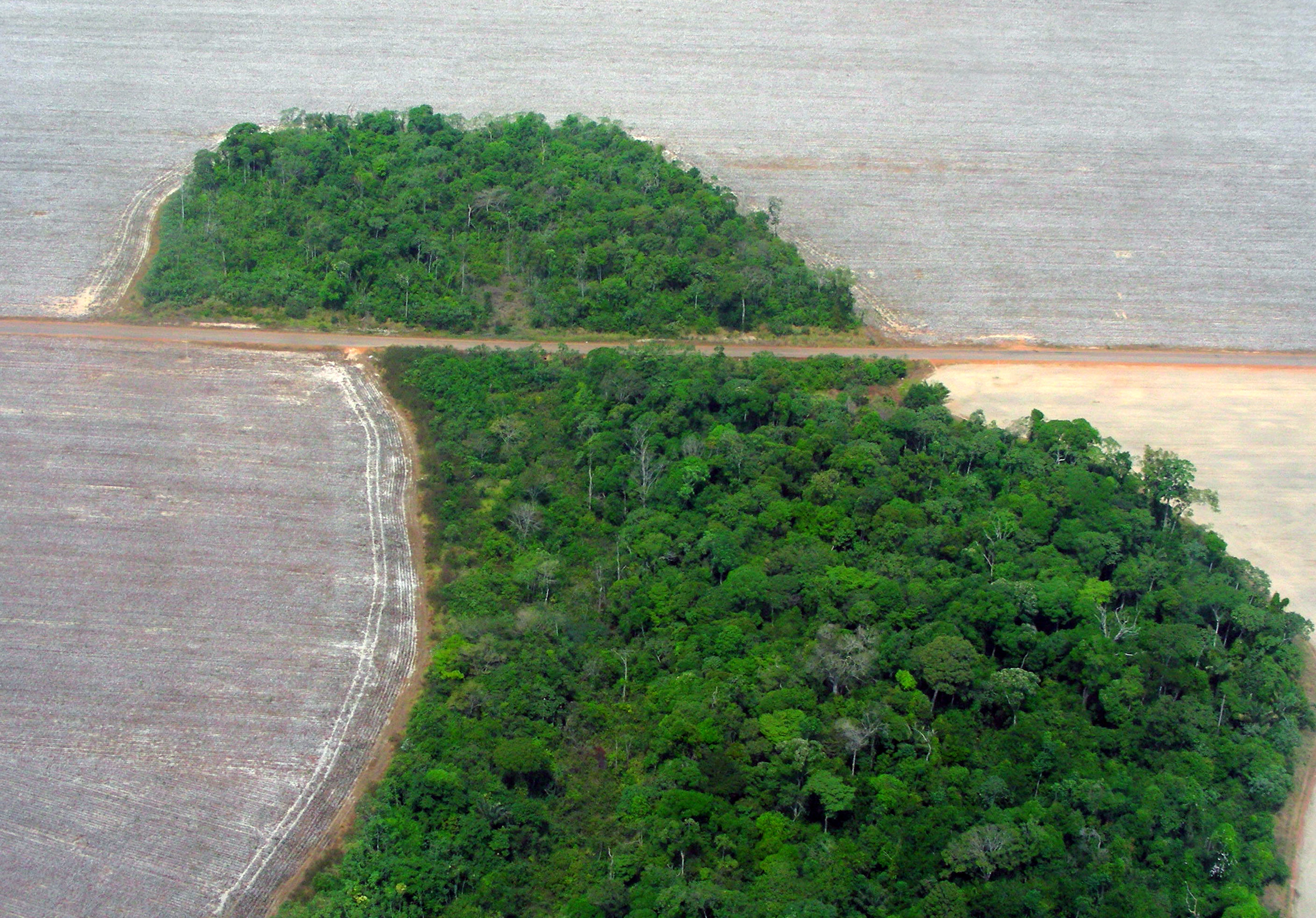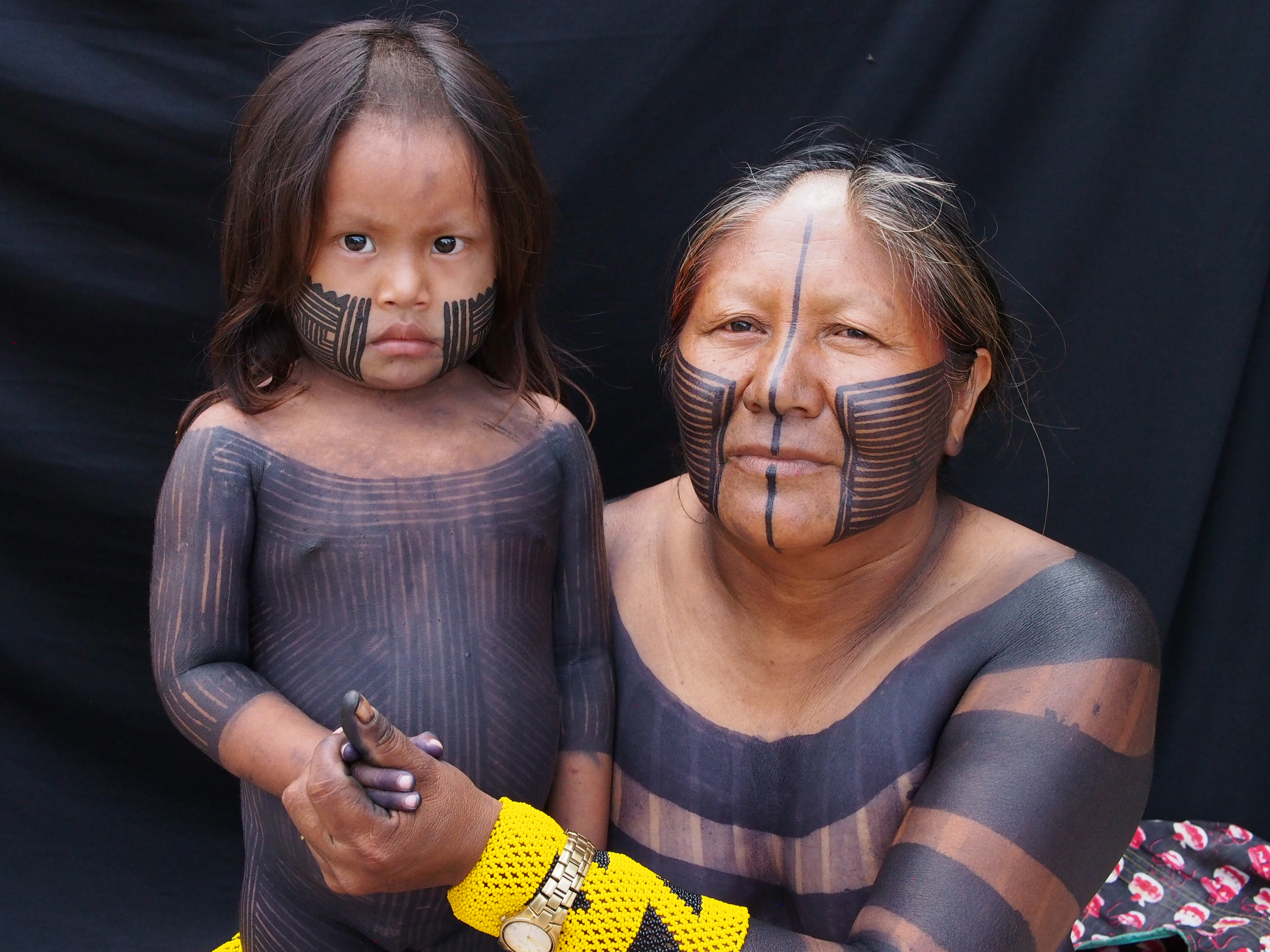By Charlotte Jansen
For decades, Brazil's Kayapo tribe has battled deforestation of their home. Now women are at the frontlines of the fight to save the rainforest.
Concealed among dense Amazonian rainforest and grassy savannas are the simple palm-thatched dwellings of the Kayapo, one of Brazil's best-known indigenous groups. Their scattered villages along the banks of the Xingu River are so remote that until the 1950s, the Kayapo people had virtually no contact with or knowledge of the outside world.
More than 8,500 Kayapo people are estimated to live in communities across an area of more than 11 million hectares in the states of Pará and Mato Grosso in northwestern Brazil—the largest area of tropical forest protected by tribes in the world.
Tuire is the chief of Kapran-krere village. Last month, photographer Pinar Yolacan visited her there. Through a translator, Tuire told Yolacan, "I am the third generation of leadership; my uncle and his father were all leaders in our community. When my uncle died and there was nobody to take his place, I decided to fight for his place. Even though I am a woman, I was already studying my uncle and was trained by him."
Was there any resistance from the community to a woman leader? "No. All of my community respects me."
Traditionally, the roles of Kayapo have been divided strictly by gender and age. Women have been considered as important to their society as men—for example, they are responsible for Kayapo body painting rituals—but the rise of female chiefs has seen women take on roles that were previously reserved for men.
Chiefs such as Tuire at the forefront of protests against illegal logging and mining, and have proved themselves to be valuable leaders and passionate, brave spokespeople.
Bephnhoti—whose "white name" is Amaury—is the spokesperson for , an indigenous NGO representing 17 Kayapo communities. Speaking to Broadly from the FP headquarters in Tucumã, Bephnhoti explained, "In the past all the chiefs were men; the men dominated the villages, the communities. But today, just like in the cities, the role of the women is getting closer to that of the men."
There are now three female chiefs in total, including Ngreikamoro in the village of Aukre. Bephnhoti is clearly impressed by her. "On the day she became chief she made a speech saying she would commit to dialogue with the other Kayapo villages, to avoid the small fights they were always having between themselves. She wants everyone to live well and get on with each other," he recalled. "She wants to make sure all of the villages are united to be able to better fight the outside threats."

Unity isn't easy to achieve. The Kayapo's remote way of life—coupled with the fact that many of the villages are only accessible by plane, spread out over huge distances, and inhabited by people who do not speak Portuguese or have any knowledge of "white men"—means that it is extremely difficult to bring attention to their issues and ongoing battle with the illegal logging, gold mining, and ranching that encroach on the 2,500 mile border of their lands.
The FP's role is to support communication between the village chiefs and with the outside world, assist with administration, and aid sustainable development and financing for the villages so that they are better equipped to defend themselves. Territorial monitoring and control is another of their principal concerns, Bephnhoti said. "I received a message from one of the chiefs that one of the neighboring farmers was beginning to spread poison on the limits of Kayapo land to kill off the forest to get more land for cattle raising."
In striking similarities with the Sioux Standing Rock Reservation in the US, the government is under pressure from large corporations and landowners who want a lucrative slice of the Amazon. In mid-January this year, the government passed a federal decree that shifted the power to make decisions on indigenous land demarcation from FUNAI to the Ministry of Jutice. This means that decisions about indigenous land will now be made by Congress. Just as Trump has pushed the Dakota Access Pipeline through, the Kayapo could see their lands rights quashed by the government.
I am only a woman, a fighter, a warrior, but they need to respect me. This is my nature, this is my land.
The decree follows PEC 215, a proposed constitutional amendment that means that only land occupied by indigenous people since 1988 would be considered as reserves. Any land they had been evicted from prior to that date would not be eligible for consideration.
"I feel the discrimination even more today on the indigenous community because of the words of President Temer and the people in his government, who talk badly about the indigenous people, and say we don't deserve the land that we have," Tuire said. "He is supporting PEC 215 which is a law to remark the indigenous territories, which will let the farmers and miners use our land."
"The situation is dire," she adds. "The pressure on their land gets worse every year—from people who want it for gold, timber, for the land—they are fighting very hard to protect what they have."

The conservation model of the Kayapo way of life is what makes their existence so vital—not only in Brazil, but as a wider environmental issue. Last year, deforestation in the Amazon by 29 percent. "What one comes to understand is that the forest is their home: It's what they understand, it provides their livelihood, it's the basis of their culture. They aren't protecting it in the same way we western environmentalists think of protecting nature, like any of us protect our homes. They don't have strict line between them and nature—they are part of nature."
One of the Kayapo's most publicized protests was at the Brazilian port city of Altamira in 1989, against a mega-dam project on the Xingu River. The international publicity that followed forced the World Bank to abandon their funding for the project. Protest and global media attention might be the most potent tools at the Kayapo's disposal, but as the Standing Rock case proved, it's not enough. Organizing travel for tribe members from Para to the federal capital of Brasilia is also very expensive, and with their limited funding, indigenous protests are becoming smaller and less frequent.
What is remarkable about the "warrior-like" Kayapo, Zimmerman says, is their toughness and attitude. They have defended their lands and their way of life—sometimes violently—against the onslaught of capitalism and they are refusing to back down despite intensifying pressure and limited resources.
In the coming months, this means that the leaderships in the tribal communities will play a pivotal role. "I get a bit emotional when I look at nature. It is sacred for me," Tuire said. "All these different types of trees exists for not just us the indigenous, but for all of our survival. They gave us the air to breathe, the oxygen we need. There are so many types of creatures here; birds, parrots, monkeys, armadillo… If people continue to destroy the nature where will all these animals live? This is why I don't let anyone destroy nature."
One thing is certain: Tuire isn't giving up. "I am going to go back to Brasilia to the National Congress in the presence of all the government people, so they can hear me tell them again that they are not able to take our land and they do this to the indigenous people and the Kayapo community."



